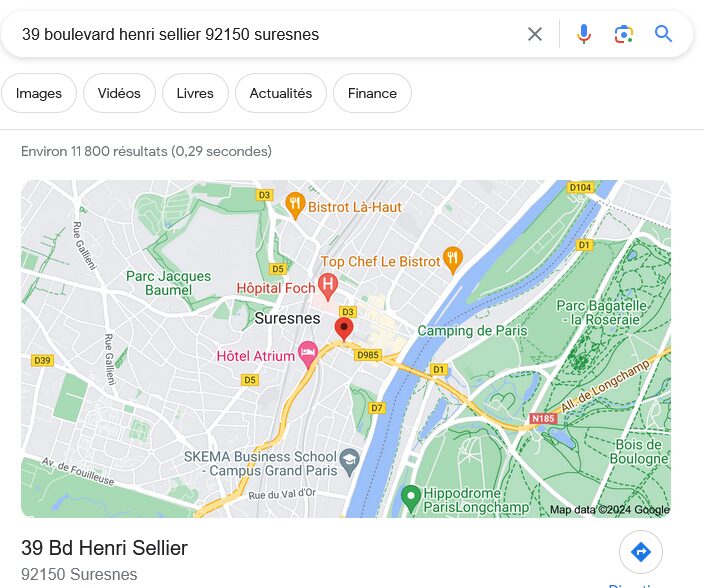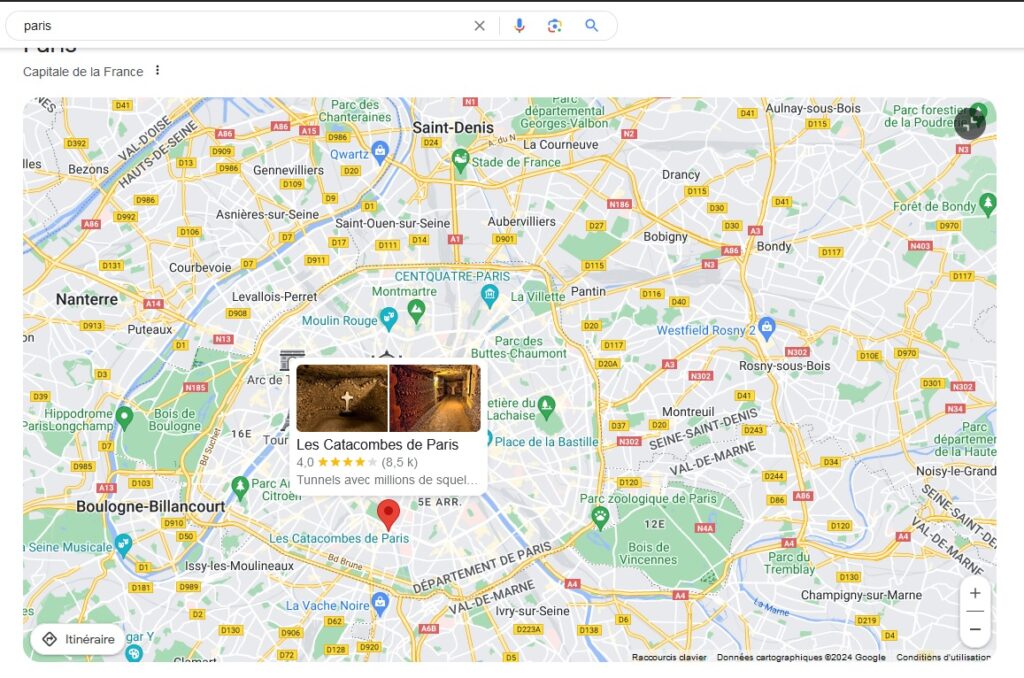Google Maps will not return in Google search. In any case, not under the version that has prevailed for years. What remains of Maps for the European Union is a greatly diminished version, which takes the form of a simple static image. It was the arrival of the DMA that pushed Google to castrate Maps in search.
In Europe, Internet users will have to definitively give up on the integration of Maps into Google. The arrival of the new European DMA (Digital Markets Act) regulation has indeed got the better of this association. And it is not expected that the mapping service will ever return to the search engine. In any case, not in the form we knew until now.
Contacted by Numerama this Tuesday March 5, the American company confirmed “ that users in the European Union will no longer see the ‘Maps’ shortcut at the top of the search page. » As for the image that appears at the top of the page, when you enter a particular postal address, it will be fixed from now on.

The search giant explains that this modification between “ within the framework of [ses] efforts to comply with the Digital Markets Regulation. » In particular, the changes relate to “ the way search results are displayed. “Sometimes this results in ” the removal of certain features. »
In other words, this also means that there is no official method to restore the previous behavior. Whether it is the shortcut at the top of the results or a Maps integration with which we can directly interact, Google does not plan any particular setting to restore this interconnection – in any case, as is and in the short term. .
These developments are not entirely a surprise, even if their impact was not necessarily well measured by the public. In mid-January, Google warned that its search engine would change substantially for Internet users in the European Union — where the DMA applies. We see it today.
A tip with private browsing… or with a VPN
Internet users have tried to find fallback solutions. For example, he has been suggested that private browsing mode on Firefox would have some merit, making Maps clickable again. We confirm that the method can work, at least occasionally — several tests have been successful, others not. Nothing says that it will remain functional once the date of March 6 has passed.
By typing New York and Paris, it was possible to find an interactive version of Maps in Google search. We were able to zoom in and out, move the map, ask for directions or even click on elements, such as a monument (there were sometimes small windows popping up). In short, the behavior of yesteryear.


In the case of a much more precise address, still with private browsing on Firefox, we could also see a responsive Maps in the search. As soon as the results page is displayed, the map, initially static, updates after a few seconds and becomes manipulable. We then find the same behavior as that noted previously.
Using a VPN with a connection point outside the European Union is also a solution — the Digital Markets Act does not affect Internet users who come from other regions of the world. There are several VPN providers on the market that offer the geographic choice of your crossing point.
Another test via the United States, which proved to be functional, whether you are connected with a Google account or simply an Internet user. Maps was fully functional, including with Firefox without private mode. Same thing for other browsers, like Microsoft Edge or Google Chrome. In short, the VPN is the only solution to restore the old operation.
Subscribe for free to Artificielles, our newsletter on AI, designed by AIs, verified by Numerama!
